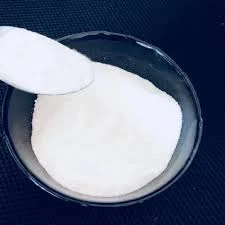
డిసెం . 11, 2024 09:58 Back to list
Understanding the Properties and Applications of Cellulose Ether in Various Industries
The Significance of Cellulose Ether in Modern Applications
Cellulose ethers are an essential class of compounds derived from cellulose, which is one of the most abundant organic polymers on Earth. They play a vital role in various industries, including pharmaceuticals, food, cosmetics, and construction, due to their unique properties. This article explores the significance, manufacturing process, and applications of cellulose ethers in modern society.
Understanding Cellulose Ether
Cellulose is a naturally occurring polysaccharide found in the cell walls of plants. When cellulose undergoes an etherification process, it forms cellulose ether, where hydroxyl groups in the cellulose structure are substituted with ether functional groups. This modification results in compounds that are soluble in water or organic solvents, depending on the type of cellulose ether produced. The most common types of cellulose ethers include methylcellulose, hydroxypropyl methylcellulose, and carboxymethyl cellulose.
Manufacturing Process
The production of cellulose ethers involves several key steps. It begins with the extraction of cellulose from natural sources, such as wood pulp or cotton linters. This raw cellulose is then purified to remove impurities. The purified cellulose is then subjected to chemical treatment with reagents such as alkali and etherifying agents (like methyl chloride or propylene oxide) in a controlled environment. This reaction leads to the substitution of hydroxyl groups with ether groups, forming cellulose ethers. The final product is then washed, dried, and milled into a powder or granules suitable for various applications.
Properties of Cellulose Ether
One of the main attractions of cellulose ethers is their versatile properties. These materials are known for their thickening, gelling, emulsifying, and film-forming capabilities. Additionally, they are non-toxic, biodegradable, and exhibit excellent stability in a wide range of pH levels and temperatures. This makes them ideal for use in diverse applications, ensuring both safety and effectiveness.
Applications in Pharmaceuticals
cellulose ether

In the pharmaceutical industry, cellulose ethers are widely used as excipients in drug formulations. They act as binders in tablets, ensuring that the active ingredients remain together. Their ability to form gels makes them suitable as controlled-release agents, enabling the gradual release of drugs into the bloodstream. Additionally, they are utilized in suspensions and emulsions to improve the stability and texture of various liquid medications.
Use in Food Industry
Cellulose ethers also have significant applications in the food industry. They are commonly used as food additives to enhance texture, viscosity, and stability in various products such as sauces, dairy items, and baked goods. For instance, hydroxypropyl methylcellulose (HPMC) is utilized as a thickener and emulsifier, improving the consistency of processed foods while ensuring they remain appealing to consumers. Additionally, these compounds possess low calories and help in reducing fat content, making them desirable for health-conscious food formulations.
Contribution to Cosmetics
In the cosmetics sector, cellulose ethers are valued for their thickening abilities and their role as film formers in lotions and creams. They help stabilize emulsions and enhance the sensory attributes of cosmetic products. Their non-irritating nature means they are suitable for sensitive skin formulations, providing an added layer of safety for consumers.
Construction and Building Materials
Cellulose ethers find their place in the construction industry as well. They are used in tile adhesives, wall putties, and other building materials to enhance workability and adhesion properties. They also improve water retention, enabling better hydration of cement mixtures, which is crucial for the durability of structures.
Conclusion
In conclusion, cellulose ethers are indispensable in modern applications across various industries. Their unique properties and versatility make them suitable for a wide range of uses, from pharmaceuticals to food, cosmetics, and construction. As industries continue to innovate and seek sustainable solutions, the importance of cellulose ethers will likely grow, reflecting their contribution to improving product performance and consumer safety. Understanding their role serves not only to appreciate their versatility but also highlights the significance of natural polymers in our everyday lives.
-
Unlocking the Benefits of HPMC Products: A Gateway to Versatile Applications
NewsAug.07,2025
-
Unleashing the Potential of HPMC Ashland: A Comprehensive Look
NewsAug.07,2025
-
Tile Bonding Cellulose: The Key to Superior Adhesion and Durability
NewsAug.07,2025
-
Hydroxypropyl Methylcellulose Powder: The Versatile Component in Modern Pharmaceuticals
NewsAug.07,2025
-
Hydroxyethyl Cellulose: The Versatile Solution for Various Industries
NewsAug.07,2025
-
Hydroxyethyl Cellulose (HEC): The Versatile Polymer for Various Applications
NewsAug.07,2025







